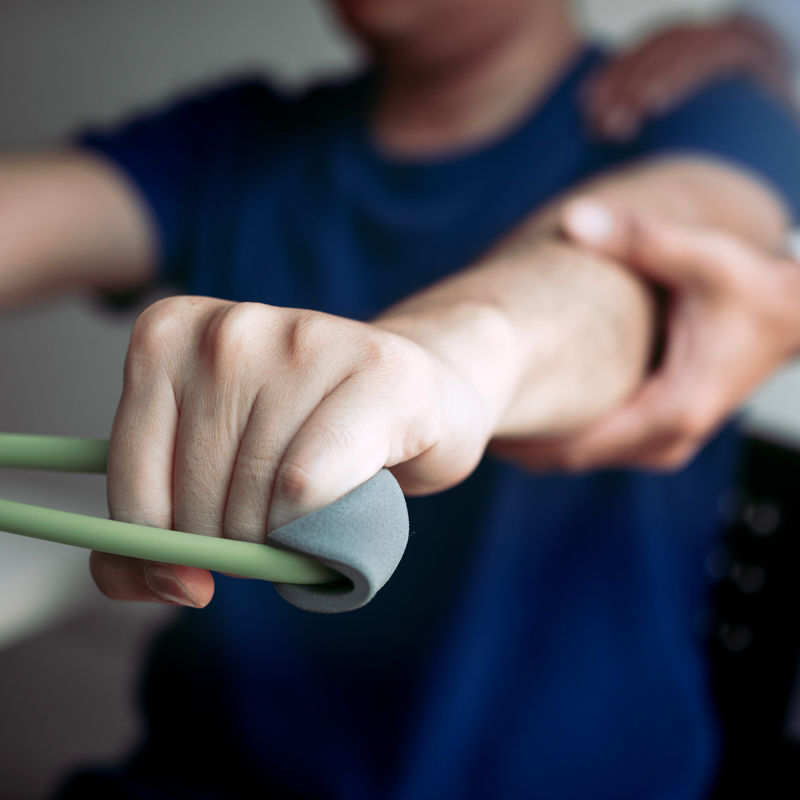A look at post-op pain control, recovery time and activity. restrictions.
If you’re considering shoulder replacement surgery, you may be wondering what the days immediately following shoulder surgery will entail — what the limits on your activity will be and how you can expect to feel. And you may be curious to know how your recovery will unfold in the weeks and months following your procedure. To provide a snapshot and timeline, we talked to Dr. Peter Chang, a Vanderbilt Sports Medicine shoulder surgeon. Dr. Chang does shoulder replacement of all varieties (and is a physician for the Nashville Sounds and Vanderbilt University athletics).
“Shoulder replacement surgery may not be as big a surgery as knee or hip replacement surgeries,” Chang said. “Nowadays it is an operation that can be done very effectively as an outpatient (same day surgery), because there are a lot of different ways to control post-operative pain.”
Pain control
For pain control after shoulder replacement surgery, Chang uses what’s called an interscalene catheter. “The anesthesiologist places a small catheter next to the neck under ultrasound guidance,” he explained. “The catheter tip is close to the nerves that give the shoulder feeling and function. And that catheter is hooked up to a bag full of local anesthetic (numbing medicine), which pumps local anesthetic into that region for four or five days. This provides excellent post-surgical pain control”
When the catheter is removed, a patient may still need some pain medication. But many times in 2-3 weeks, patients no longer require strong narcotic pain medications. “Typically what we’ll see,” Chang said, “is patients will come back about 2 weeks after their operation and they’ll tell me that their arthritis pain is already gone and their surgery pain is getting better every day.”
Initial activity restrictions
To replace the shoulder joint, your surgeon must detach — and later repair — a muscle called the subscapularis. “The implant is stable and solid from day one,” Chang explained. “A patient could technically actively lift their shoulder after their surgery, but we have to protect that muscle as it heals.”
After shoulder replacement surgery, you will likely wear a sling for about four to six weeks. “We recommend keeping the hand in front of the body,” Chang said. “That will protect the muscle. If the hand is rotated out or up high or reaching behind the back, those positions would put stress on that muscle that’s trying to heal.”
“We recommend keeping the hand in front of the body. That will protect the muscle.”
Chang said you can drive as long as you’re off narcotic pain medications — but there are a few caveats. “Patients can operate power steering,” he said. “But we don’t want them to reach across their body and get the seatbelt or shift gears or change the radio — anything that would have them reaching out.”
In general, you can move your elbow, wrist and hand, which aids in completing some everyday functional activities. “Patients are allowed to do their activities of daily living. They can feed themselves, they can brush their teeth and they can reach down in front of themselves,” Chang said. “But the key is the hand should stand in front of the body.”
You don’t need to prep your home in any special way pre-surgery. However, having a few ready-to-heat meals on hand is a good idea. “You’d be able to make a sandwich after about two weeks,” he said. “You just couldn’t lift that heavy pot of soup up off the stove with the operative arm.”
You can return to desk work after about two weeks. “But to do any kind of heavy labor or pushing or pulling or sports activities,” Chang said, “that’s more like three to four months to allow for proper rehab and strength after surgery.”
Physical therapy
In the three to four months after shoulder surgery, you’ll be undergoing a progressive program of physical therapy to recondition the shoulder muscles. “Typically by six or eight weeks, patients will have fairly normal motion,” Chang said. “At that point, we can get rid of the sling, and we start to work on strengthening.” Once physical therapy is complete, Chang said people continue to make gains in shoulder strength and endurance over the next nine months. People can have gains in strength, range of motion, and endurance for a year after surgery.

If you have shoulder pain or a shoulder injury, the specialists in the Vanderbilt Shoulder Care Program can help you find relief. They provide a range of treatments, from physical therapy to total shoulder replacement.





